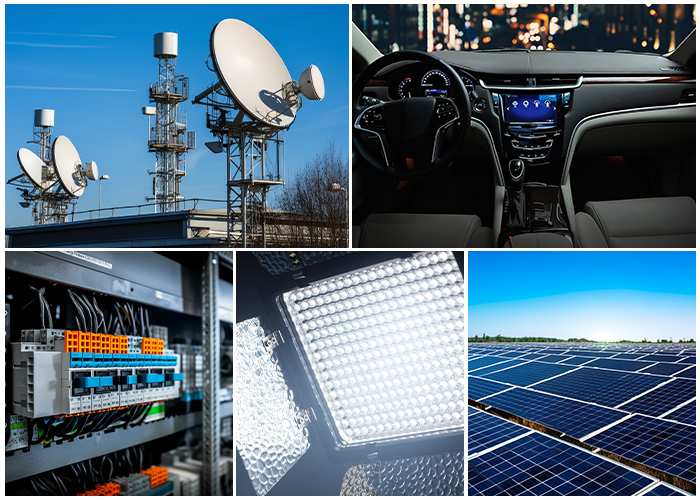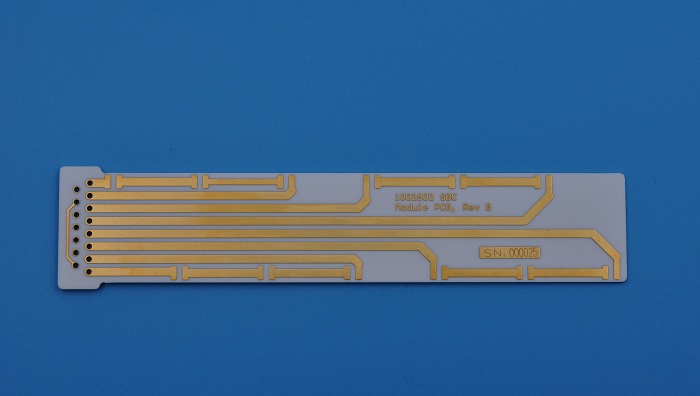Introduction to the Main Materials and Advantages of Ceramic PCB
1. The necessity of using ceramic circuit boards
Ordinary PCB is usually made of copper foil and substrate, and the substrate material is mostly fiberglass (FR-4), phenolic resin (FR-3) and other materials. The adhesive is usually phenolic, epoxy, etc. During the PCB processing process, due to thermal stress, chemical factors, improper production processes, etc., or due to the asymmetry of copper paving on both sides during the design process, it is easy to cause the PCB board to warp to varying degrees.
Another type of PCB substrate, ceramic substrate, is widely used in high-power power electronic modules, aerospace, etc. due to its heat dissipation performance, current carrying capacity, insulation, thermal expansion coefficient, etc., which are much better than ordinary glass fiber PCB sheets. , military electronics and other products.
Unlike ordinary PCBs, which use adhesives to bond the copper foil and the substrate together, Ceramic PCB are made by bonding the copper foil and the ceramic substrate together in a high-temperature environment. The bonding force is strong, and the copper foil It will not fall off, has high reliability, and has stable performance in environments with high temperature and humidity. Therefore, when your product requires high stability, we recommend using ceramic PCB, which can greatly enhance the product's use time and effect.

2. Main materials of ceramic substrates
Alumina (Al2O3) is the most commonly used substrate material in ceramic substrates. Therefore, compared with most other oxide ceramics in terms of mechanical, thermal and electrical properties, it has high strength and chemical stability, and has abundant sources of raw materials. It is suitable for various applications. Made with different techniques and different shapes. According to the percentage of aluminum oxide (Al2O3), it can be divided into: 75 porcelain, 96 porcelain, and 99.5 porcelain. Aluminum oxide content is different, its electrical properties are almost unaffected, but its mechanical properties and thermal conductivity vary greatly. Substrates with low purity have large surface roughness. The higher the purity of the substrate, the smoother, denser and lower the dielectric loss, but the higher the price.
Aluminum nitride (AlN) ceramics are ceramics with aluminum nitride powder as the main crystal phase. Compared with alumina ceramic substrates, the insulation resistance and insulation voltage are higher, and the dielectric constant is lower. Its thermal conductivity is 7 to 10 times that of alumina, and its coefficient of thermal expansion (CTE) approximately matches that of silicon wafers, which is crucial for high-power semiconductor chips. In terms of production technology, the thermal conductivity of aluminum nitride is greatly affected by the content of residual oxygen impurities. Reducing the oxygen content can significantly improve the thermal conductivity.
Based on the above reasons, it can be known that alumina ceramics are still in a dominant position in the fields of microelectronics, power electronics, hybrid microelectronics, power modules and other fields due to their superior comprehensive performance. Therefore, the application of alumina ceramic PCB in products occupies the market. important location and the main trend of future development.

3. Main advantages of ceramic PCB
Compared with FPC and ordinary PCB, ceramic PCB can carry a larger flow. When 100A current continuously passes through a 1mm0.3mm thick copper body, the temperature rise is about 17°C; when 100A current continuously passes through a 2mm0.3mm thick copper body, the temperature rise is only about 5°C;
Ceramic PCB has better heat dissipation performance, low thermal expansion coefficient, stable shape, and is not easy to deform and warp.
Ceramic PCB has good insulation and high voltage resistance in product applications, ensuring personal safety and equipment.
The bonding force is strong during production and using bonding technology, the copper foil will not fall off.
It has high reliability in high-intensity applications and stable performance in environments with high temperature and humidity.
4.Use of ceramic PCB
The main application scenarios of ceramic PCB are as follows
Solar panel components, etc.
High power LED lighting products
High frequency switching power supply, solid state relay
Automotive electronics, aerospace, military electronic products
Communication antenna, car ignition






















































 HOME
HOME







